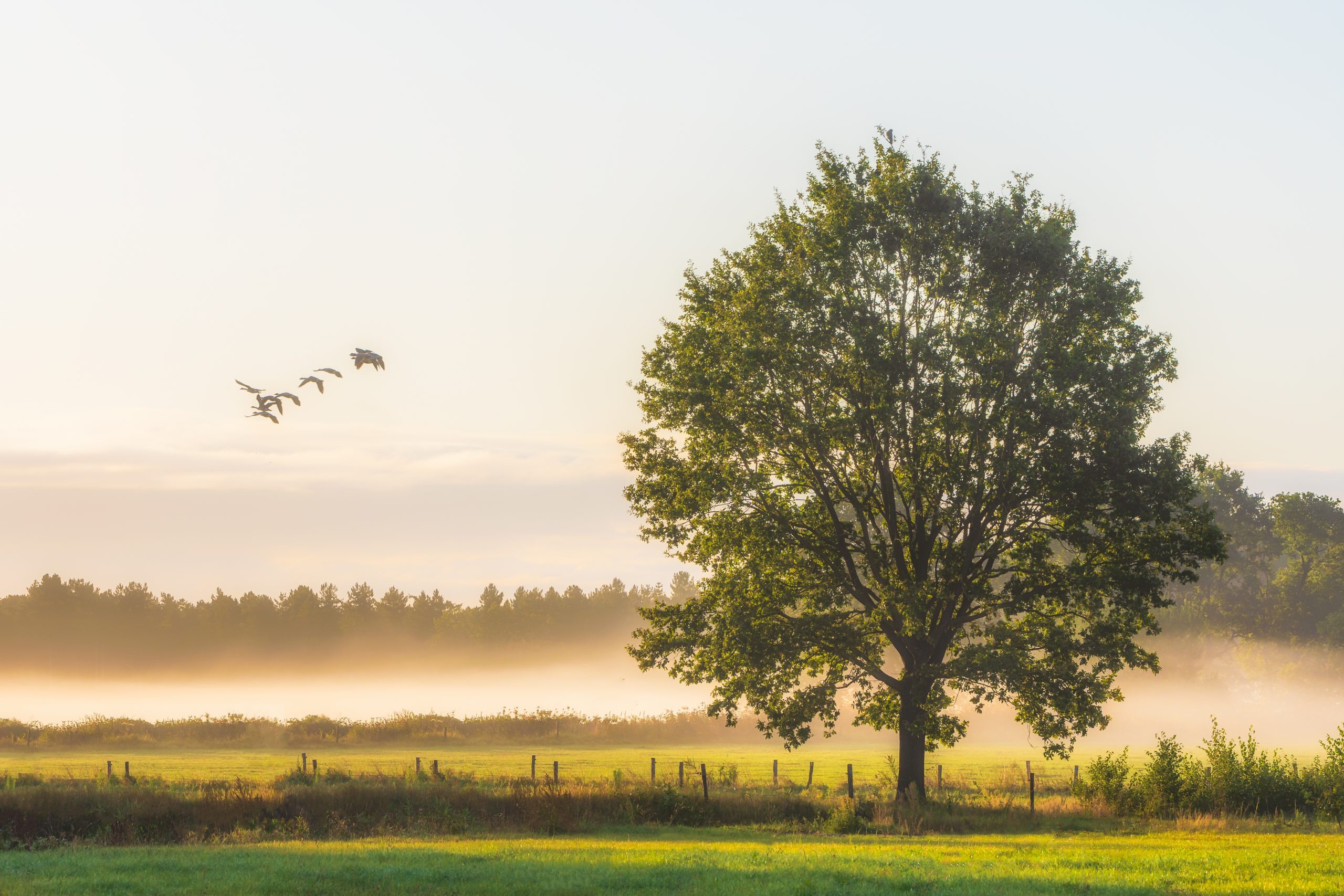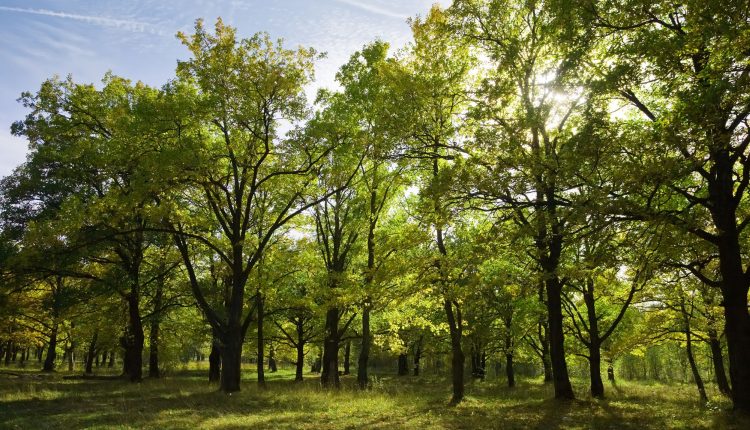BEST PRACTICES FOR TRANSPLANTING TREES SUCCESSFULLY
Transplanting trees successfully requires careful planning, proper techniques, and post-transplant care to minimize stress and ensure the tree’s survival and healthy growth. Here are some best practices to follow for successful tree transplantation:

1. Assess Tree Transplant Suitability:
- Evaluate the tree’s size, age, health, and root structure to determine if it’s suitable for transplantation.
- Consider the new site’s conditions, including soil quality, light exposure, and space availability.
2. Select the Right Time:
- Choose the optimal time for transplanting based on the tree species, climate, and season.
- Generally, transplanting during the dormant season or early spring and fall is less stressful for the tree.
3. Prepare the Tree and Site:
- Prune the tree’s canopy to reduce stress and maintain a balanced shape. Avoid heavy pruning that could shock the tree.
- Prepare a root ball that includes a sufficient portion of the tree’s root system, minimizing root disturbance during the process.
- Amend the new planting site’s soil if necessary to ensure good drainage and nutrient availability.
4. Transplanting Techniques:
- Dig a root ball that’s appropriate for the tree’s size, typically one foot of root ball diameter for every inch of trunk diameter.
- Lift the tree carefully, ensuring the root ball remains intact. Use proper lifting equipment and techniques to avoid damaging roots.
- Transport the tree to the new site promptly to minimize stress.
- Plant the tree at the same depth it was previously growing, making sure the root flare is above the soil surface.
5. Watering and Mulching:
- Water the tree thoroughly before transplanting to ensure it’s well-hydrated.
- Water the tree immediately after transplanting and regularly during the establishment period.
- Apply a layer of mulch around the base of the tree to conserve moisture, regulate soil temperature, and prevent weed growth. Avoid piling mulch against the trunk.
6. Aftercare and Maintenance:
- Establish a consistent watering schedule to prevent drought stress during the early months of establishment.
- Monitor the tree’s health regularly for signs of stress, disease, or pest infestations.
- Prune as needed to remove dead or damaged branches and promote proper growth.
- Fertilize the tree appropriately, avoiding excessive fertilization that could stress the tree.
7. Root System Establishment:
- Prioritize root growth during the first few years after transplantation by providing consistent water and avoiding heavy pruning.
- Minimize soil compaction and disturbance around the root zone to encourage healthy root development.
8. Gradual Adaptation:
- Allow the tree to gradually adjust to its new environment, particularly changes in light exposure, soil, and climate.
- Avoid overstimulating the tree with excessive fertilization or drastic changes to care practices.
9. Educate Stakeholders:
- Educate property owners about the importance of post-transplant care and their responsibilities in maintaining the tree’s health.
- Consider involving certified arborists or tree care professionals for guidance and assistance.
10. Patience and Observation:
- Understand that successful tree transplantation is a gradual process that takes time for the tree to establish itself in its new location.
- Observe the tree’s progress over the first few years, making adjustments as needed based on its response to the transplant.
Importance of proper tree transplanting techniques for tree health and establishment
Proper tree transplanting techniques are essential for ensuring the health, establishment, and long-term survival of trees in their new locations. Trees are valuable assets in landscapes, providing aesthetic beauty, ecosystem services, and numerous benefits. Transplanting can be a stressful process for trees, but when done correctly, it can greatly contribute to their well-being. Here’s why proper transplanting techniques are crucial:

- Minimizing Transplant Shock: Transplanting can shock a tree’s root system, impacting its ability to uptake water and nutrients. Proper techniques, such as preserving the root ball and minimizing root disturbance, help reduce transplant shock, enabling the tree to recover more quickly.
- Promoting Root Development: Healthy roots are essential for a tree’s stability, nutrient absorption, and overall health. Adequate care during transplanting encourages the growth of new roots into the surrounding soil, enhancing the tree’s ability to anchor itself and access nutrients.
- Reducing Stress: Trees that undergo stress from improper transplanting techniques may become more susceptible to pests, diseases, and environmental factors. Proper techniques help minimize stress, allowing the tree to focus on growth and adaptation.
- Ensuring Proper Anchorage: Correct transplanting methods ensure that the tree is securely anchored in its new location. Properly prepared root balls and appropriate planting depths help prevent the tree from leaning or toppling over.
- Preventing Girdling Roots: Girdling roots can hinder the growth of a tree by circling the trunk and constricting its vascular system. Transplanting provides an opportunity to address girdling roots and prevent further issues.
- Optimizing Nutrient Uptake: A well-established root system ensures efficient nutrient uptake, supporting healthy foliage, growth, and overall tree vitality.
- Maintaining Aesthetic Appeal: Proper techniques help maintain the tree’s shape and appearance after transplanting. Pruning and maintaining the canopy’s balance prevent the tree from becoming lopsided or unsightly.
- Supporting Ecosystem Services: Transplanted trees continue to provide essential ecosystem services such as carbon sequestration, air purification, and habitat for wildlife. Healthy, established trees contribute more effectively to these services.
- Long-Term Survival: Proper transplanting techniques lay the foundation for the tree’s long-term survival. A well-established tree is more likely to withstand environmental stressors, diseases, and pests over time.
- Cost-Effectiveness: Investing time and effort in proper transplanting techniques can lead to cost savings in the long run. Healthy, established trees require fewer interventions and replacements, reducing maintenance and replacement costs.
- Preserving Cultural and Historic Value: Transplanting allows the preservation of valuable, historic, or culturally significant trees during landscape changes or construction projects. Proper techniques ensure these trees continue to thrive and contribute to the surroundings.
- Educational Opportunities: Properly transplanted trees serve as educational examples of best practices for homeowners, landscapers, and communities, promoting responsible tree care.
- Environmental Stewardship: Effective transplanting aligns with sustainable environmental practices by preserving trees, which are vital components of green spaces and urban ecosystems.
In conclusion, proper tree transplanting techniques are vital for maintaining tree health, resilience, and the benefits they provide to the environment and communities. Taking the time to employ these techniques demonstrates a commitment to the well-being of trees and contributes to the overall quality of our landscapes.
Assessing Tree Transplant Suitability
Assessing tree transplant suitability involves evaluating various factors to determine whether a tree is a good candidate for transplantation to a new location. Transplanting a tree is a significant process that can be stressful for the tree, so it’s crucial to assess whether the tree is healthy, well-established, and suitable for the move. Here’s how to assess tree transplant suitability:
- Tree Health:
- Examine the overall health of the tree. Look for signs of vitality such as full foliage, healthy color, and vigorous growth.
- Check for any existing diseases, pest infestations, or structural issues that might make the tree unsuitable for transplantation.
- Trees with severe health issues or in decline may not be good candidates, as the stress of transplantation could further weaken them.
- Age and Maturity:
- Younger trees tend to transplant more successfully than older, mature trees. Their smaller root systems are easier to manage and adapt to a new location.
- Very old trees may have extensive root systems that are challenging to transplant without causing significant stress.
- Root Structure:
- Assess the root system’s size and structure. Trees with well-developed, fibrous root systems are more likely to survive transplanting.
- Trees with circling or girdling roots might experience complications during transplantation, and addressing these issues before transplanting is essential.
- Root-to-Shoot Ratio:
- Evaluate the balance between the size of the canopy (above-ground growth) and the root system (below-ground growth).
- A healthy root-to-shoot ratio is important for the tree’s ability to uptake water and nutrients after transplanting.
- Site Conditions:
- Consider the current site’s conditions, including soil type, drainage, sunlight exposure, and available space.
- Assess whether the tree’s requirements match the conditions of the new site.
- Transplanting Season:
- Different tree species have preferred seasons for transplanting. Research the specific requirements of the tree in question.
- Transplanting during the tree’s dormant season or during mild weather can reduce stress.
- Tree Species:
- Some tree species have shallow root systems or are more sensitive to transplanting. Research the species’ characteristics and requirements.
- Some trees, like oaks, beeches, and conifers, can be more challenging to transplant successfully due to their specific root structures.
- Transplanting Purpose:
- Consider why the tree needs to be transplanted. Is it for a construction project, landscape design change, or preservation of a valuable tree?
- Understanding the purpose of the transplant can influence the decision on whether to proceed.
- Future Growth and Development:
- Evaluate whether the tree’s growth will be compatible with the new site’s conditions and the intended landscape design.
- Consider factors such as potential size, shade cast, and potential interactions with nearby structures.
- Professional Assessment:
- Consult with certified arborists or tree care professionals to assess the tree’s suitability for transplanting.
- Professionals can provide expert guidance based on their knowledge and experience.
In conclusion, assessing tree transplant suitability involves a thorough evaluation of the tree’s health, age, root system, site conditions, and other factors that influence its adaptability to a new location. This assessment helps ensure that the tree has the best chance of surviving and thriving after transplantation.


Comments are closed.